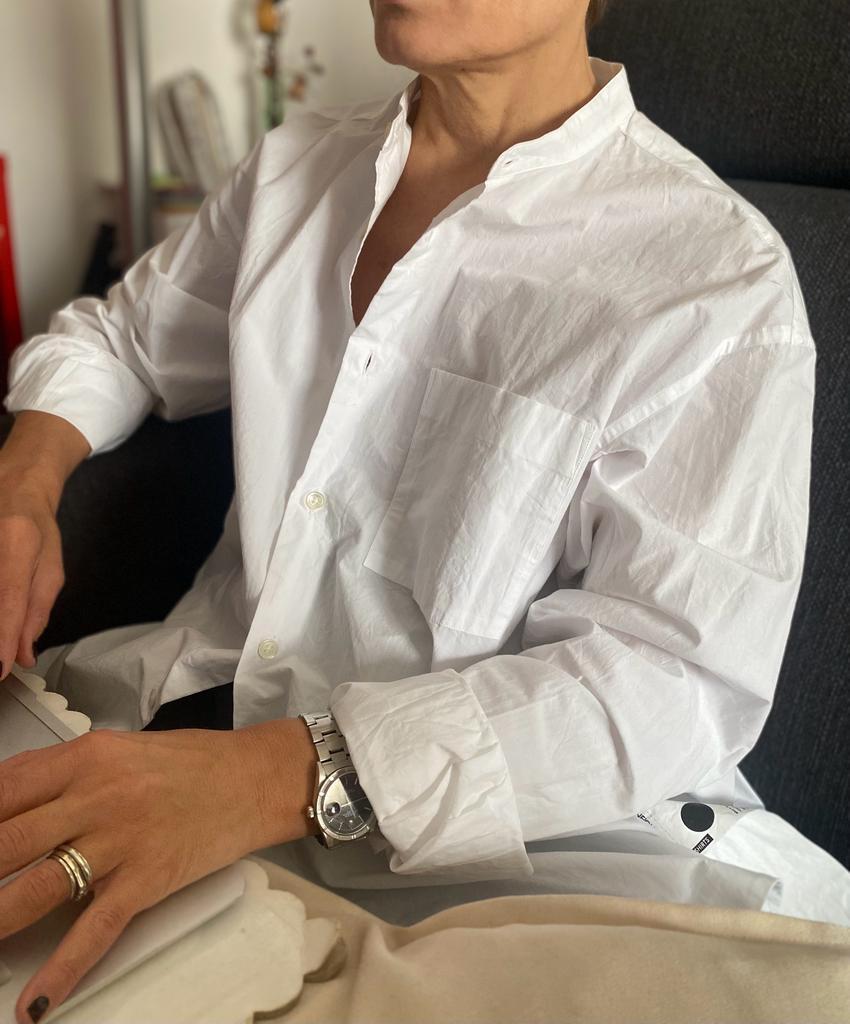The Link Between Freedom and Style
Expressing Identity Through Fashion
Style is a powerful means of expressing one’s freedom. Take, for instance, the latest phase of Jane Birkin’s style, meaning the Doillon phase, when she intentionally stopped being the sexy doll. Her effortless looks have become synonymous with women’s empowerment and liberation. Through her iconic fashion choices, she demonstrated how personal style can transcend societal norms and convey individuality and confidence. Whether a pair of oversized jeans or a mannish blazer, Birkin’s fashion sense speaks volumes about her unique identity and spirit.
“Fashion is not something that exists in dresses only. Fashion is in the sky, in the street, fashion has to do with ideas, the way we live, what is happening.” – said Coco Chanel.
Through fashion and personal style, individuals can convey their unique identities, preferences, and emotions without the need for words. From the brands we buy – which, by doing so, we endorse and champion their values – to our consumption habits and preferences, the way we dress speaks volumes about us.
Style, self-expression and freedom
In fact, style functions as a form of self-expression and freedom. But how does this happen? Here are a few ways:
- Individuality: Style allows people to showcase their unique tastes and personalities. Choosing what to wear and how to wear, it reflects personal choices and independence from societal norms.
- Cultural Identity: Through clothing and accessories, individuals can celebrate their heritage and cultural backgrounds. Traditional garments and modern interpretations of cultural attire are both powerful expressions of cultural pride and freedom.
- Creative Expression: Fashion is an art form. Mixing and matching different pieces, experimenting with colours, patterns, and textures. But even DIY modifications of clothes are ways to unleash creativity and break free from conventional fashion rules.
- Mood and Emotion: What you wear can reflect or influence your mood. Bright colours might express joy or energy, while darker tones could reflect a more subdued or contemplative state. Style is a dynamic way to communicate feelings.
- Rebellion and Resistance: Throughout history, fashion has been used to challenge the status quo and make political statements. For example, during the 1960s and 1970s, the punk movement emerged as a rebellious counter-culture, with its fashion characterised by ripped clothing, safety pins, and provocative slogans. This style was a direct challenge to mainstream aesthetics and a form of resistance against social and political norms. Similarly, the black beret and leather jacket became symbols of the Black Panther Party, representing their fight for civil rights and social justice.
- Empowerment: Dressing in a way that makes one feel confident and comfortable is empowering. It’s a declaration of self-acceptance and confidence, free from the need to conform to others’ expectations. For instance, the 1980s saw the rise of power dressing among women, characterised by tailored suits with padded shoulders. Power dressing helped women assert their authority and competence in male-dominated environments, making a strong statement about gender equality and self-empowerment.
Style, the essence of fashion
In essence, style is a multifaceted tool of personal expression and a celebration of freedom. It allows individuals to showcase their individuality, celebrate cultural identity, unleash creativity, reflect moods and emotions, challenge societal norms, and feel empowered. Each choice in fashion tells a unique story, making personal style a powerful means of communication.
The Link Between Freedom and Style Read More »
